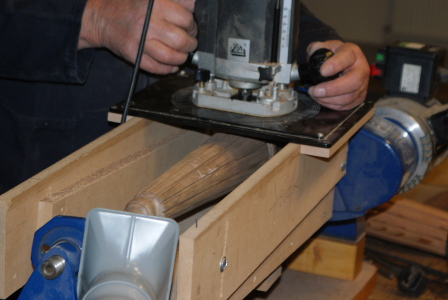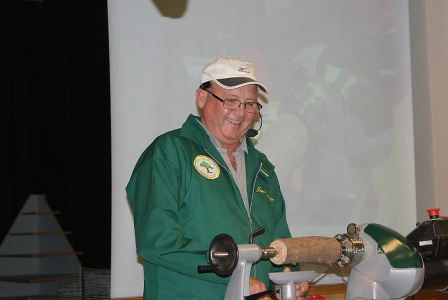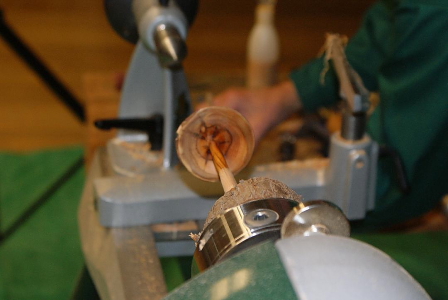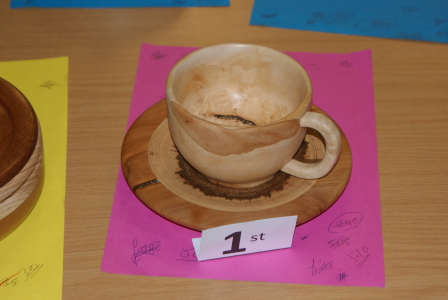Bob Walder introduced his evening’s demonstration as the routing of flutes to a turned conical piece as an embellishment.
Bob had already mounted the router box on the lathe and the piece was set between centres. The basic setup for the jig was finalised and an indexing arm set so that 12 flutes could be made. An initial flute was routed to part depth and checked to make sure it was ok. The remaining flutes were routed to the same depth using the indexer to lock the position.


Once this was completed the router depth was reset to make another cut.

Usually Bob would make several passess to achieve the full depth but in this case he set to full depth in one go as time was a factor. Each of the flutes was cut in turn on the same index positions.

Once completed the piece would be sanded through the grits along the grain, not with the lathe running.

The base is a turned disc but needs a deep hole drilled into the centre for the flex. Bob showed us his set up for doing this and the long drill that he uses and he very kindly donated one of these drills to the club. A really good insight into how these sort of problems can be overcome relatively easily.

The demonstration showed us that with a little ingenuity and thought you can add routed detail to your pieces using a relatively straight forward jig. The effect you can achieve would be well worth the effort.


 The stem was then turned in short sections down to size as it would not be practical to turn it all in one go.
The stem was then turned in short sections down to size as it would not be practical to turn it all in one go.  In this instance there were heart shakes on this log so Ian thought that to go really thin could be impractical and potentially dangerous as the piece could break up during turning. He opted for a long but less thin stem.
In this instance there were heart shakes on this log so Ian thought that to go really thin could be impractical and potentially dangerous as the piece could break up during turning. He opted for a long but less thin stem. Everything was sanded and finished with a type of friction polish.
Everything was sanded and finished with a type of friction polish. Although this was primarily faceplate turning it did show that useful and saleable items can be made relatively easily using such inserts.
Although this was primarily faceplate turning it did show that useful and saleable items can be made relatively easily using such inserts.

